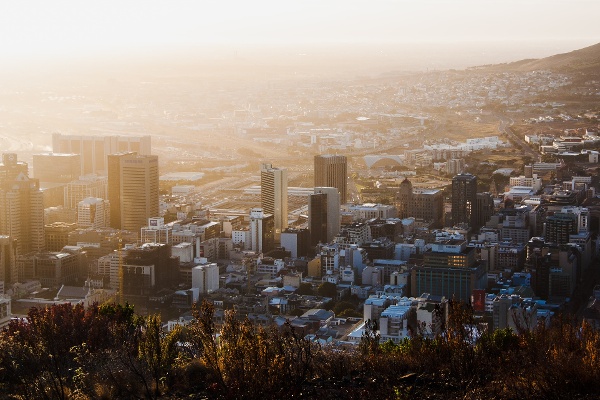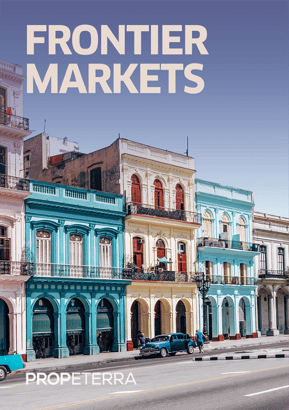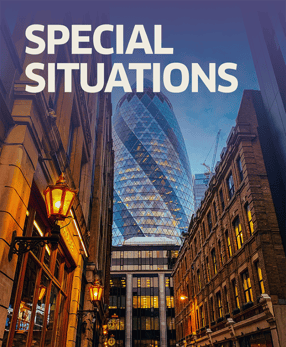Housing Finance Africa (HFA) tracks demand, provision and opportunities in the South African housing sector (Housing Finance Africa (2020)). It illustrates performance against the backdrop of a faltering economy, pervasive structural inequality and continued devaluation of the rand.

With Covid exacerbating an already fragile economy that swings between anaemic growth and outright recession, a febrile political situation is placing pressure on Cyril Ramaphosa to deliver on his early promise. Even a casual visitor to South Africa senses the extraordinary disparity between rich and poor, manifest in housing. Sat in Rosebank or Constantia, mixing with recently minted Jozi-nites or old money Capetonians, townships and temporary dwellings are never far from opulence and splendour. Affordable housing is one of the most pressing questions confronting South Africa, and if addressed, could provide a prototype not only for the rest of the country but many immediate neighbours.
The last General Household Survey- conducted in 2018- shows eight in ten South Africans reside in formal dwellings, versus 13% in informal dwellings, and the residual in traditional accommodation (General Household Survey (2018)/ Housing Finance Africa (2020)). Statistics show a growing proportion of individuals who are in receipt of some form of government support, given the expansion in the state subsidisation programme. In fact, this increased nearly three fold in the reporting period .(General Household Survey (2018)/ Housing Finance Africa (2020)). Nearly two thirds of the households in formal accommodation were homeowners, with a quarter in rented accommodation and the remainder living rent free (General Household Survey (2018)/ Housing Finance Africa (2020)). The growth in those in informal dwellings seems to owe to a growing trend of urbanisation common to many developing countries, leading to demand outstripping supply and people residing in alternative forms of housing. According to HFA, there is a shortfall of nearly 2.3 million in South Africa, with the true number likely higher (General Household Survey (2018)/ Housing Finance Africa (2020)). In Johannesburg alone, there is thought to be a deficit approaching 300,000 units, with average annual delivery of no more than 3,500 (General Household Survey (2018)/ Housing Finance Africa (2020)).
Supply is, of course, related to affordability. ABSA (formerly Barclays Africa), provides interesting data points as to the capacity of ordinary South Africans to cover the costs of new build accommodation (ABSA (2020)/ Housing Finance Africa (2020)). The cost of development, both in construction terms, and in land acquisition, is misaligned with the purchasing power of the eventual consumer. Data from ABSA suggests the build rate per square meter for a new build less than 80 square meters was c. US$400, which combined with land, infrastructure, project, loan and marketing costs, would price a standard 46 square meter house at around 400,000 rand (US$24,160) (ABSA (2020)/ Housing Finance Africa (2020)). According to the Centre for Affordable Housing Finance Africa (CAHF), though, an individual earning between c. US$100-US$300 a month could afford a property in the region of US$9000 (ABSA (2020)/ Housing Finance Africa (2020)). These figures- compiled pre coronavirus and attendant joblessness- serve to illustrate the scale of the problem. Indeed, if you consider expanding urban conurbations, this becomes even more concerning. In Johannesburg alone, around 25 per cent of individuals are from outside Gauteng with 10 percent documented as coming from outside of the country (Peterson (2019)).

When impact investors consider the African continent, there tends to be a gravitation toward familiar markets such as South Africa. Notwithstanding questions as to expropriation of land and economic headwinds, the weight of population in the country, its well established financial structure and English language, mean investors consider it an entry point for the continent. However, there is no silver bullet for the resolution of such a deeply ingrained problem. Instances of gentrification such as Maboneng in downtown Johannesburg hint at the potential of revisiting abandoned urban areas left fallow. These measures, though welcome, are only a sticking plaster over a larger problem. For foreign investors to engage meaningfully in the country, they need to be able to transact in US dollars, given the historical volatility of the rand, as well as being assured populist posturing does not lead to retroactive changes in legislation overturning agreements. Propeterra has access to a number of strategic land assets in satellite towns around the major urban centres, and relationships with modular building suppliers. In areas where land values are suppressed but accessibility still exists, it is possible to generate yield for South African-based investors, with challenges remaining for those seeking to transact in hard currencies.






